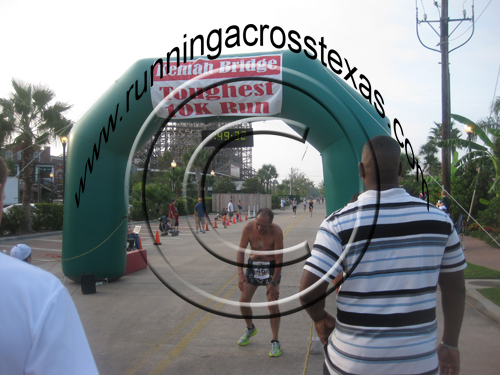Running and Friendly Links
Looking for more great content? Visit our partner sites:
The Green Frugal
I Can Fix Up My Home
Do you need an article written and featured on one of our sites or yours to promote your business? Hire Me!
Tim Noakes’ Ten Laws of Running Injuries, Law One
Injuries are not an Act of God; Health is Determined by Extrinsic and Intrinsic Forces


One of the most learned researchers in the field of running and human fitness and performance is Tim Noakes, MD, of South Africa. His seminal book Lore of Running is one of the classic books in this field.
Obviously, all runners and athletes in general should have a copy on their bookshelves. One topic Noakes is what he calls the Ten Laws of Running Injuries. Let’s examine the first law.
Law Number 1 – Injuries Are Not an Act of God
It’s easy to blame running injuries on God, Zeus, Allah, or your coach. Haven’t we all done just that at some point? But it won’t wash in the scientific realm of sports physiology.
Noakes makes the observation that sports injuries in sports in general and running in particular arise from two basic sources, extrinsic and intrinsic forces. It’s reasonable to assume that in many cases it’s actually a combination of both. What are these forces?
Extrinsic Forces are Inevitable
Extrinsic forces are basically external forces. Some sports carry more risk than others. For example, athletes engaging in football, soccer (the other kind of football depending on where you live), street hockey, rugby, and others are extremely high risk. Even cheer leading is high risk Fox News now tells us.
The bottom line is this; getting smacked physically is guaranteed to mess up your world to some extent. This is one reason why professional hockey players are challenged in the tooth department and end up funding their dentist’s children’s college degrees. It’s why football linebackers dress up looking like walking mattresses.
Intrinsic forces are Personal Issues
Runners, from sprinters to ultra-marathoners, usually end up sidelined at some point by intrinsic forces. Specifically these are conditions that are directly related to your individual physiology and habits.
Noakes tells us that there are three things at play here:
- The genetics that you as a runner have been blessed with. You there with the orthotics; you know who you are!
- Your training environment. Are you a trail runner? Softer surface but a greater chance of tripping. Do you do a lot of speedwork always running around the track in the same direction?
Spend hours running on the cambered shoulder of the road? Have you been properly fitted for running shoes? Speaking of shoes, the jury is still out on barefoot running.
- Your training methods. Different things work for different people. Unfortunately, sometimes it takes an injury to find out what doesn’t work.
So how many runners are actually beset by intrinsics? Noakes puts it this way, “Take any ten of us and you will probably find every possible biomechanical running abnormality ever described (and a few that defy description).”
How Can a Runner Stay Injury Free?
It goes without saying that there is no way to alter your genetic makeup; you can’t pick your parents, as they say. But your training environment can be altered. Start by reversing your direction at the track when traffic allows.
Be sure you run in running shoes that have been fitted for you by an expert if you are a new runner.
What about tour training methods? Some runners should reduce speedwork. Try to include more stretching in your routine or take up a yoga class. If you have a hilly race is on your race calendar, add some hill training to your routine gradually.
The bottom line here is to figure out how your unique body is configured and how it reacts to stress, which is what training is after all. It may be a steep learning curve, but in the long run, you’ll find it’s worth it. Anything beats sitting on the bench.
This book is a must-own for runners of all levels and abilities. Go here to get your copy of the Lore of Running, 4th Edition
Check back; we will be posting the other laws soon! In the meantime, here are the ones we have posted:
- Tim Noakes’ Ten Laws of Running Injuries; Law One
- Tim Noakes’ Ten Laws of Running Injuries; Law Two
- Tim Noakes’ Ten Laws of Running Injuries; Law Three
- Tim Noakes’ Ten Laws of Running Injuries; Law Four
Also Trending:
References:
- Tim Noakes, MD (1985). Lore of Running, Fourth Edition. South Africa: Oxford University Press
Recommended Related Articles
- Stress Fracture or Shin Splints?
- Specific Stretches Offer Relief for Runner’s Knee
- Is the Barefoot Running Trend Right for You?
- The Facts on Performance Enhancing Supplements Marketed to Runners
Visit Kelly's profile on Pinterest.
Website © 2011 KSmith Media, LLC; all rights reserved. Webmaster’s Google profile











